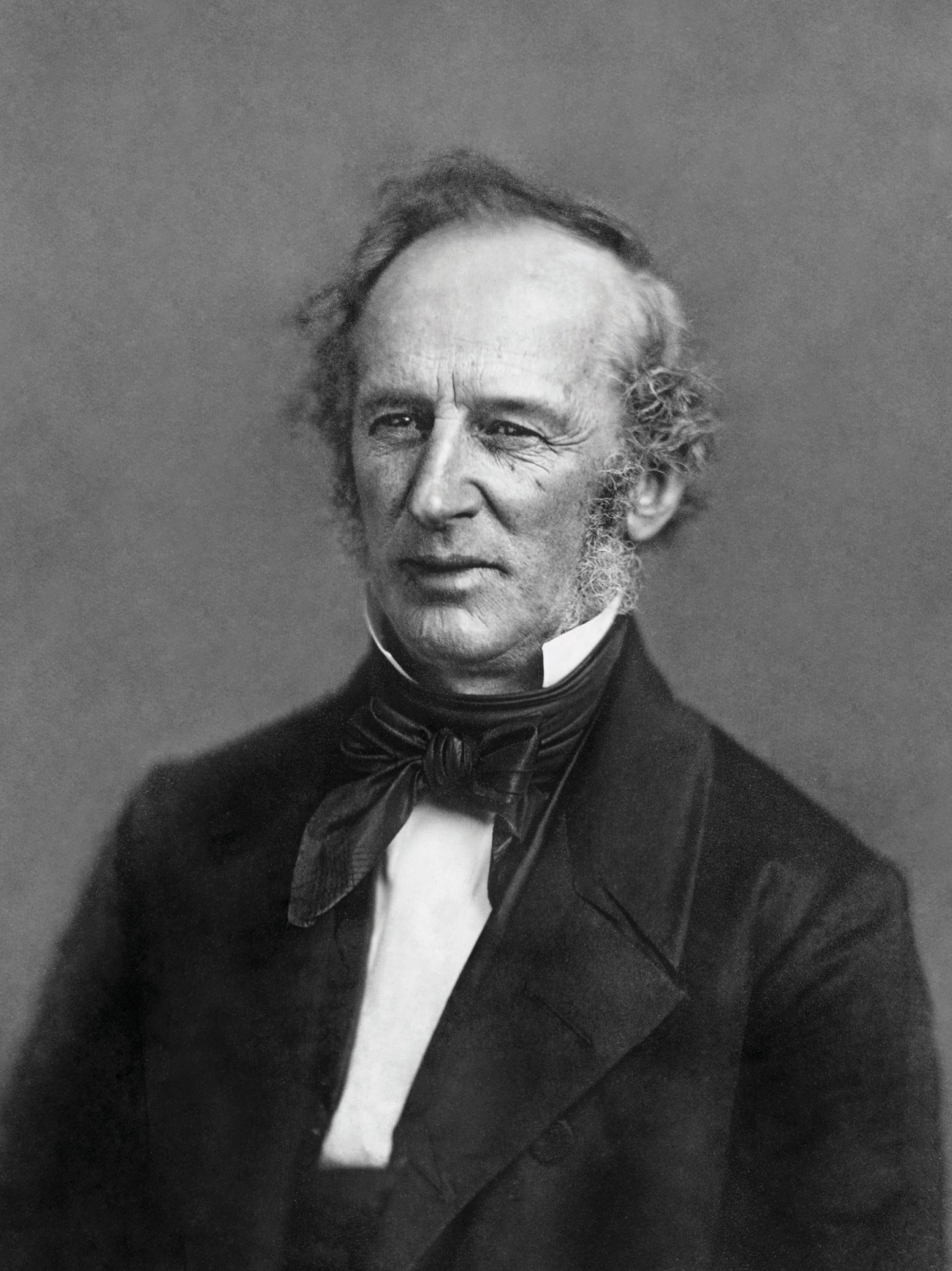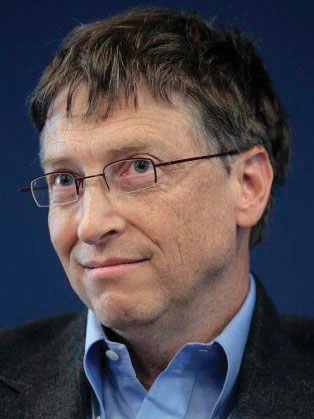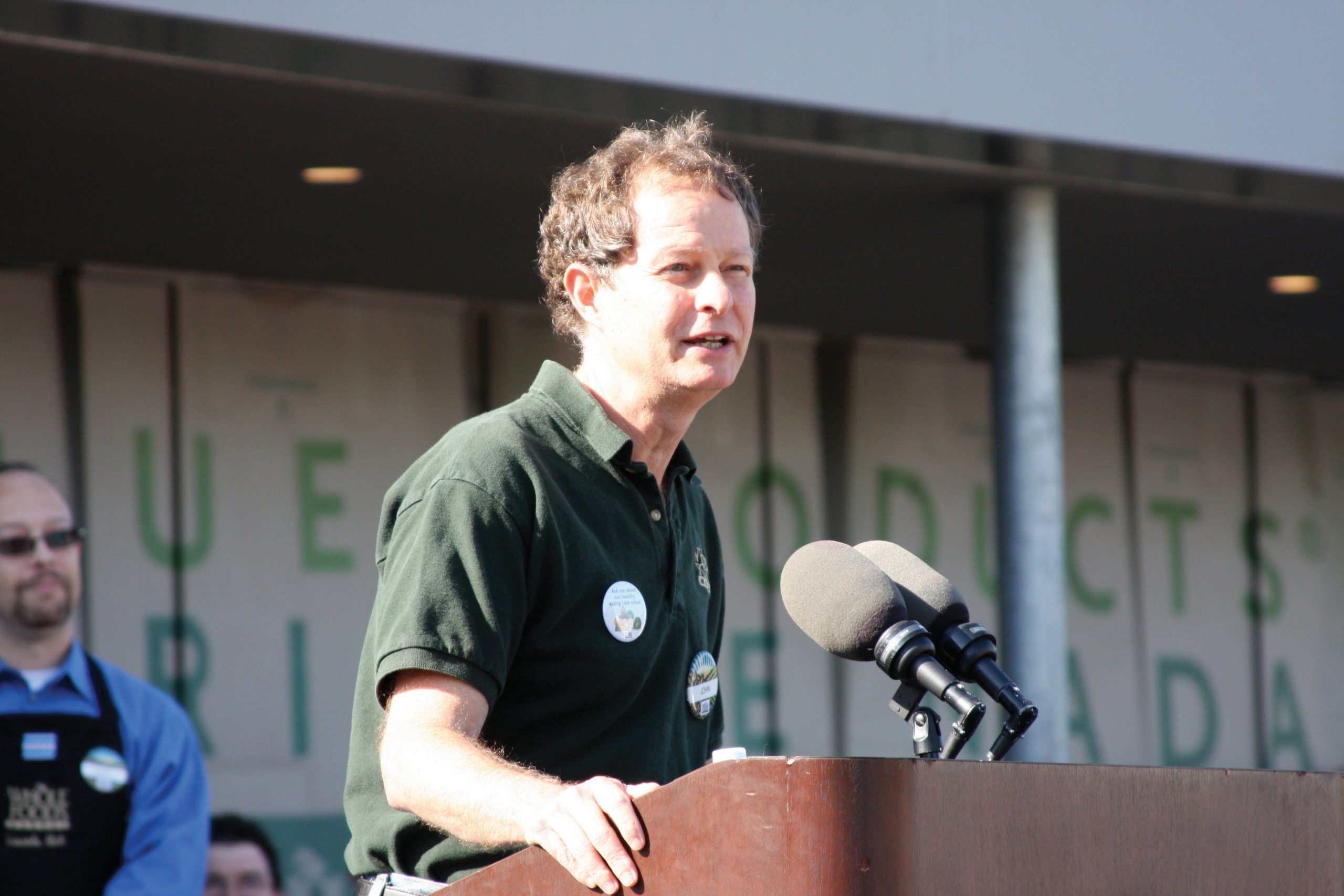11 2.4 The CEO as Celebrity
Learning Objectives
- Understand the benefits and costs of CEO celebrity status.
- List and define the four types of CEOs based on differences in fame and reputation.
- Be able to offer an example of each of the four types of CEOs
Table 2.7 CEO
At the top of every organization sits a chief executive office (CEO) who serves as the main architect of its strategy and, in many cases, as the face of the organization. Some CEOs such as Steve Jobs, Mark Zuckerberg, Richard Branson, and Oprah Winfrey have enough personality and influence in business and society that they become celebrities, much like sports and movie stars. Celebrity status can provide great visibility for an organization, but it can also cause harm if a CEO makes major mistakes. Meanwhile, other CEOs toil away in relative obscurity. Some produce good results that escape public attention, while others should be thankful that their poor work goes unnoticed. Considering CEOs’ relative fame and reputation together allows us to identify four types of CEOs.
| Low CEO Reputation | High CEO Reputation | |
|---|---|---|
| High CEO Fame | Scoundrels–In the early 2000s, several high profile CEOs played central roles in ethical scandals. One was Enron CEO Kenneth Lay, who in 2006 was convicted of crimes related corporate abuse and accounting fraud. He later committed suicide. | Icons–A rare combination of style and substance leads these CEOs to become household names. The “Oracle of Omaha” Warren Buffett has advised presidents, and the yearly letters he writes to his shareholders are as influential as any report created by the Federal Reserve and other financial institutions. |
| Low CEO Fame | Silent Killers–These unknown CEOs can be just as harmful to their firms as celebrity scoundrels. Harding Lawrence, former CEO of now defunct airline Braniff International, made a major blunder by expanding the airline too quickly. Lawrence was fired before the firm plunged into bankruptcy. By the time Braniff disappeared into history, Lawrence’s poor decisions were largely forgotten. | Hidden Gems–These CEOs perform their jobs admirably, but they lack fame. Many prefer to avoid the spotlight, but they are known all too well by their wary competitors. Anne Mulcahy, CEO of Xerox, is a hidden gem whose avoidance of media attention may stem from her humble roots as a copier salesperson. |
Benefits and Costs of CEO Celebrity
The nice thing about being a celebrity is that when you bore people, they think it’s their fault.
Henry Kissinger, former US Secretary of State
The word celebrity quickly brings to mind actors, sports stars, and musicians. Some CEOs, such as Bill Gates, Oprah Winfrey, Martha Stewart, and Donald Trump, also achieve celebrity status. Celebrity CEOs are not a new phenomenon. In the early twentieth century, industrial barons such as Henry Ford, John D. Rockefeller, and Cornelius Vanderbilt were household names. However, in the current era of mass and instant media, celebrity CEOs have become more prevalent and visible (Table 2.7 “CEO”) (Ketchen, et. al., 2008).

Cornelius Vanderbilt was one of the earliest celebrity CEOs; Vanderbilt University serves as his legacy.
Wikimedia Commons – public domain.
Both benefits and costs are associated with CEO celebrity. As the quote from Henry Kissinger suggests, celebrity confers a mystique and reverence that can be leveraged in a variety of ways. CEO celebrity can serve as an intangible asset for the CEO’s firm and may increase opportunities available to the firm. Hiring or developing a celebrity CEO may increase stock price, enhance a firm’s image, and improve the morale of employees and other stakeholders. However, employing a celebrity CEO also entails risks for an organization. Increased attention to the firm via the celebrity CEO means any gaps between actual and expected firm performance are magnified. Further, if a celebrity CEO acts in an unethical or illegal manner, chances are that the CEO’s firm will receive much more media attention than will other firms with similar problems (Ranft, et. al., 2006).
There are also personal benefits and risks associated with celebrity for the CEO. Celebrity CEOs tend to receive higher compensation and job perks than their colleagues. Celebrity CEOs are likely to enjoy increased prestige power, which facilitates invitations to serve on the boards of directors of other firms and creates opportunities to network with other “managerial elites.” Celebrity also can provide CEOs with a “benefit of the doubt” effect that protects against quick sanctions for downturns in firm performance and stock price. However, celebrity also creates potential costs for individuals. Celebrity CEOs face larger and more lasting reputation erosion if their job performance and behavior is inconsistent with their celebrity image. Celebrity CEOs face increased personal media scrutiny, and their friends and family must often endure increased attention into their personal and public lives. Accordingly, wise CEOs will attempt to understand and manage their celebrity status (Wade, et. al., 2008).
Types of CEOs
Icons are CEOs possessing both fame and strong reputations. The icon CEO combines style and substance in the execution of his or her job responsibilities. Mary Kay Ash, Richard Branson, Bill Gates, and Warren Buffett are good examples of icons. The late Mary Kay Ash founded Mary Kay Cosmetics Corporation. The firm’s great success and Ash’s unconventional motivational methods, such as rewarding sales representatives with pink Cadillacs, made her famous. Partly because she emphasized helping other women succeed and ethical business practices, Mary Kay Ash also had a very positive reputation. Richard Branson has created an empire with more than four hundred companies, including Virgin Atlantic Airways and Virgin Records. Branson’s celebrity status led him to star in his own reality-based show. He has also appeared on television series such as Baywatch and Friends, in addition to several cameo appearances in major motion pictures. Bill Gates, founder and former CEO of Microsoft, also has fame and a largely positive reputation. Gates is a proverbial “household name” in the tradition of Ford, Rockefeller, and Vanderbilt. He also is routinely listed among Time magazine’s “100 Most Influential People” and has received “rock star” receptions in India and Vietnam in recent years.

Former Microsoft CEO Bill Gates exemplifies a CEO who has reached icon status.
Wikimedia Commons – CC BY-SA 2.0.
Warren Buffett is perhaps the best-known executive in the United States. As CEO of Berkshire Hathaway, he has accumulated wealth estimated at $62 billion and was the richest person in the world as of March 2008. Buffett’s business insights command a level of respect that is perhaps unrivaled. Many in the investment and policymaking communities pay careful attention to his investment choices and his commentary on economic conditions. Despite Buffett’s immense wealth and success, his reputation centers on humility and generosity. Buffett avoids the glitz of Wall Street and has lived for fifty years in a house he bought in Omaha, Nebraska, for $31,000. Meanwhile, his 2006 donation of approximately $30 billion to the Bill and Melinda Gates Foundation was the largest charitable gift in history.
CEOs who display high levels of relative fame but low levels of reputation are in the group called scoundrels. These CEOs are well known but vilified. The late Leona Helmsley was a prototypical scoundrel. Leona Helmsley’s life was a classic rags-to-riches story. Born to immigrant parents, Helmsley became a billionaire through her work as the head of an extensive hotel and real estate empire. While certainly famous, her reputation was anything but positive, as reflected by her nickname: the Queen of Mean. During Helmsley’s trial for tax fraud, her housekeeper quoted her as proclaiming, “We don’t pay taxes. Only the little people pay taxes.” Following twenty-one months in jail, Helmsley was required to perform 750 hours of community service. One hundred fifty hours were added to this sentence after it was discovered that employees had performed some of her service hours. Helmsley’s apparent arrogance, combined with her cruelty to employees and her reputation as the ultimate workplace bully, cemented her position as a scoundrel.
The corporate governance scandals of the early 2000s revealed several CEOs as scoundrels. Perhaps the best known were Kenneth Lay and Dennis Kozlowski. Both men rose to prominence as their firms’ success and stock prices soared but were undone by dubious activities. Lay was once revered as the son of a poor minister who founded Enron and built it into a giant in the energy business. In 2001, however, he became the face of corporate abuses in the United States after Enron’s collapse led to scenes, captured on television, of employees left jobless and with retirement accounts full of worthless Enron stock. Lay was convicted of fraud in 2006 but died before sentencing.
Also born to a poor family, Kozlowski started at Tyco as an accountant and worked his way up to the executive suite. In May 2001, a BusinessWeek cover story lauded Kozlowski as “the most aggressive CEO” in the country and detailed his strategy for building Tyco into the next General Electric by using acquisitions to gain the first or second position in all the industries in which it competed. By 2002, Kozlowski’s reputation was in jeopardy. He was indicted for avoiding more than $1 million in sales taxes on art purchases. Media stories described in detail a $2 million birthday party Kozlowski threw for his wife (billing half of it to Tyco as a company function), a $19 million apartment Tyco purchased for him, and $11 million worth of furnishings for the apartment (including an infamous $6,000 shower curtain). Accusations that Kozlowski and another Tyco executive stole hundreds of millions of dollars from the firm ultimately led to a prison sentence of eight to twenty-five years.
Hidden gems are CEOs who lack fame but possess positive reputations. These CEOs toil in relative obscurity while leading their firms to success. Their skill as executives is known mainly by those in their own firm and by their competitors. In many cases, the firm has some renown due to its success, but the CEO stays unknown. For example, consider the case of Anne Mulcahy. Mulcahy, CEO of Xerox, started her career at Xerox as a copier salesperson. Despite building an excellent reputation by rescuing Xerox from near bankruptcy, Mulcahy eschews fame and publicity. While being known for successfully leading Xerox by example and being willing to fly anywhere to meet a customer, she avoids stock analysts and reporters.
Silent killers are the fourth and final group of CEOs. These CEOs are overlooked and ignored sources of harm to their firms. While scoundrels are closely monitored and scrutinized by the media, it may be too late before the poor ethics or incompetence of the silent killers is detected. In this sense, silent killers are sometimes worse than scoundrels. One example of a silent killer is Harding Lawrence, former CEO of defunct Braniff International. Lawrence initiated a massive expansion of the airline following industry deregulation in the late 1970s. The result was a bloated firm, ill-equipped to survive the extremely competitive setting that evolved in the early 1980s. Howard Putnam, the CEO of a small regional carrier named Southwest Airlines, was hired in a failed effort to save the company. By the time Braniff went bankrupt, Putnam was left to explain its demise, and the name of the main culprit was all but forgotten. Ironically, had Putnam declined the opportunity to try to save Braniff, perhaps he and not Herb Kelleher would have become an icon at the helm of Southwest.
Strategy at the Movies
Iron Man
Has Tony Stark gone crazy? This was the question that many stakeholders of Stark Industries were asking themselves in the 2008 blockbuster Iron Man. Tony Stark, CEO of Stark Industries, stunned his shareholders, employees, and the world when he announced that he was changing Stark Industries’ mission from being one of the world’s leading weapons manufacturers to being a socially responsible, clean energy producer. Following his announcement, Stark faced fierce opposition from his board of directors, employees, the media, and clients such as the US military. The changes at Stark Industries attracted tremendous attention in part because of the glamorous Stark’s status as a celebrity CEO. Initially, Stark is seen by the public as a scoundrel that pays little attention to the social impact his company makes. After shifting the direction of Stark Industries, however, Stark is viewed as an icon that is just as attentive to the social performance of the company as he is to its financial performance. Iron Man illustrates that while changing elements such as firm mission and CEO status is difficult, it is not impossible.

Iron Man: The Greatest Creation of Fictional Celebrity CEO Tony Stark
The Conmunity – Pop Culture Geek – Comic-Con 2010 – Hasbro booth – Iron Man armor – CC BY 2.0.
Celebrity Rehabilitation
Anything I say or do is now at risk of showing up on the front page of a national daily newspaper and therefore, I need to be much more conscious about the implications of everything that I say or do in all situations.
John Mackey, CEO of Whole Foods Market
Achieving the level of success that brings about celebrity is seldom a completely smooth process. Even well-regarded celebrity CEOs seldom have totally untarnished reputations. Bill Gates has been portrayed as a ruthless and devious genius, for example, while General Electric CEO Jack Welch was attacked in media outlets for an extramarital affair.
One of the more interesting recent cases of a tarnished reputation centers on John Mackey, founder and CEO of Whole Foods Market. His strategy of offering organic food and high levels of service allowed Whole Foods to carve out a profitable and growing niche in an industry whose overall margins have been squeezed as Walmart’s Supercenters have gained market share. Under Mackey’s leadership, Whole Food’s stock price tripled from 2001 to 2006. Mackey’s efforts to make food supplies healthier and his teamwork-centered management approach attracted publicity, and he appeared headed for icon status.
But in 2007 Mackey and Whole Foods were embarrassed by the revelation that Mackey had been anonymously posting negative information about a rival, Wild Oats, online. Through his online persona “rahodeb” (a scrambling of his wife’s name), Mackey asserted that Wild Oats’ stock was overpriced and that the firm was headed toward bankruptcy. This was viewed by some observers as a possible effort to manipulate Wild Oats’ stock price prior to a proposed acquisition by Whole Foods. Meanwhile, in e-mails to other Whole Foods executives, Mackey noted that the acquisition of Wild Oats could allow them to avoid “nasty price wars.” This caught the eye of Federal Trade Commission (FTC) regulators who were concerned about the antitrust implications of the acquisition.

Whole Foods CEO John Mackey’s celebrity status was amplified when it was revealed that he had posted negative information online about competitor Wild Oats.
Wikimedia Commons – CC BY 2.0.
What should a CEO do when his or her reputation takes a hit? As the old saying goes, honesty is the best policy. An example is offered by David Neeleman, founder and CEO of JetBlue. The reputations of JetBlue and Neeleman took a severe blow after a widely reported February 2007 debacle in which travelers were stranded in airplanes for excessive periods of time during a busy holiday weekend. Neeleman took a giant step toward restoring both his and JetBlue’s reputation by issuing a public, heartfelt apology. He not only issued a written apology to customers but also bought full-page advertisements in newspapers, posted a video apology online, and created a new “bill of rights” for JetBlue customers.
Mackey apologized for his actions via his blog in 2008. As part of this apology, Mackey acknowledged that he had failed to recognize how expectations change when one becomes a celebrity. Mackey noted that when Whole Foods was a smaller company, “I was seldom interviewed and few people knew or cared who I was. I wasn’t a public figure and had no desire to become one.” As his company grew, however, Mackey became subject to more scrutiny. As Mackey put it, “At some point in the past 10 years I went from being a relatively unknown person to becoming a public figure. I regret not having the wisdom to recognize this fact until very recently (Mackey, 2008).” A big part of managing celebrity status is realizing that one is in fact a celebrity.
Key Takeaway
- The media exposure common to modern CEOs provides the opportunity for such top executives to reach celebrity status. While this status can provide positive benefits to their firms such as increased performance, CEOs should be aware of and manage the potential for increased scrutiny associated with this status.
Exercises
- Can you identify another example of a celebrity CEO, such as Cornelius Vanderbilt, that existed prior to the 1900s?
- Identify examples of icons, scoundrels, hidden gems, and silent killers other than the examples offered in this section.
- Would you enjoy the media attention associated with CEO celebrity, or would you prefer to hide from the limelight? Does your answer have implications for your future career choices?
References
Ketchen, D., Adams, G., & Shook, C. 2008. Understanding and managing CEO celebrity. Business Horizons, 51(6), 529–534.
Mackey, John blog. 2008, May 21. Re: Apology. Retrieved from http://www2.wholefoodsmarket.com/blogs/jmackey/2008/05/21/back-to-blogging/#more-26.
Ranft, A. L., Zinko, R., Ferris, G. R., & Buckley, M. R. 2006. Marketing the image of management: The costs and benefits of CEO reputation. Organizational Dynamics, 35(3), 279–290.
Wade, J. B., Porac, J. F., Pollock, T. G., & Graffin, S. D. 2008. Star CEOs: Benefit or burden? Organizational Dynamics, 37(2), 203–210.

